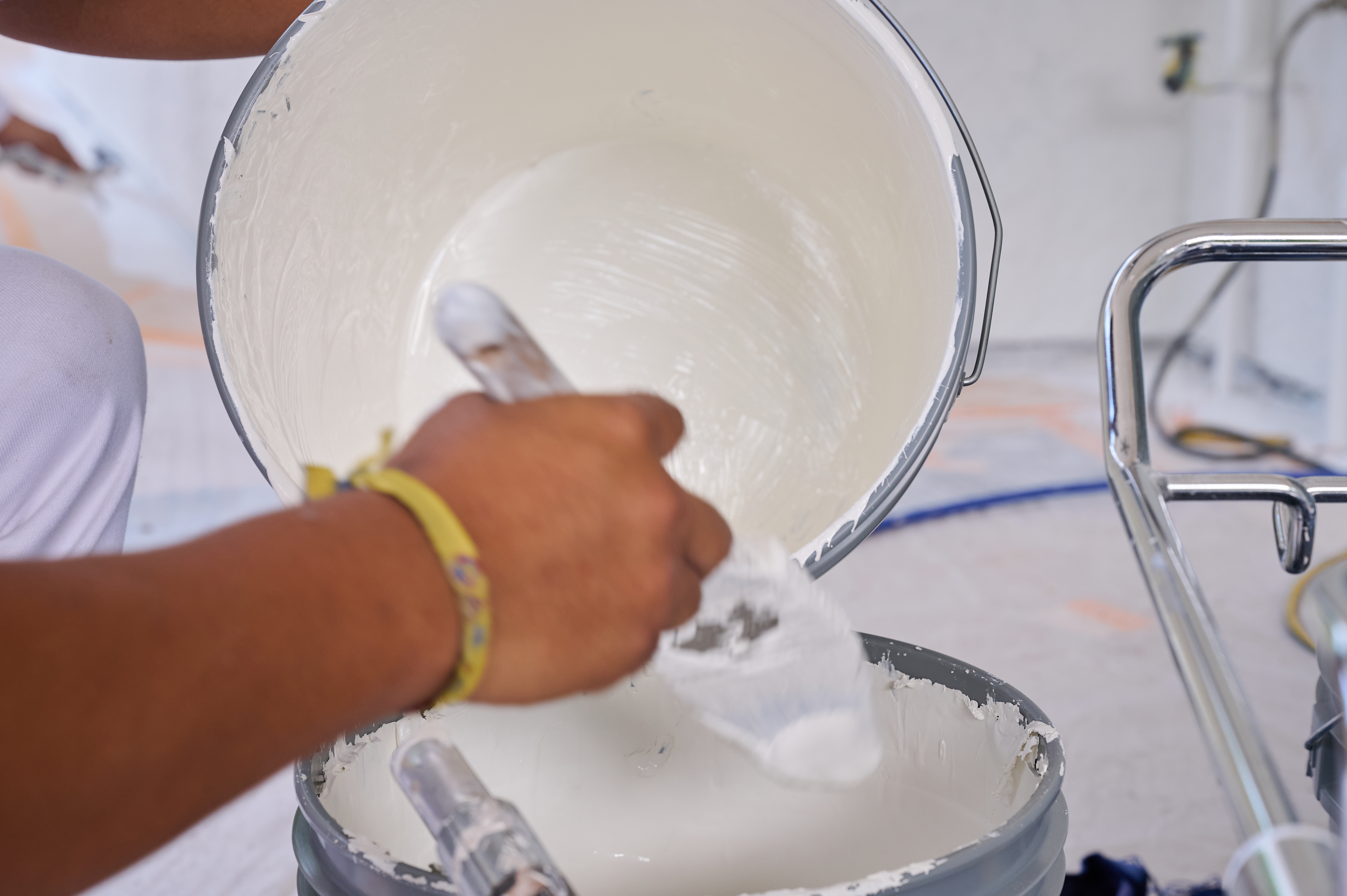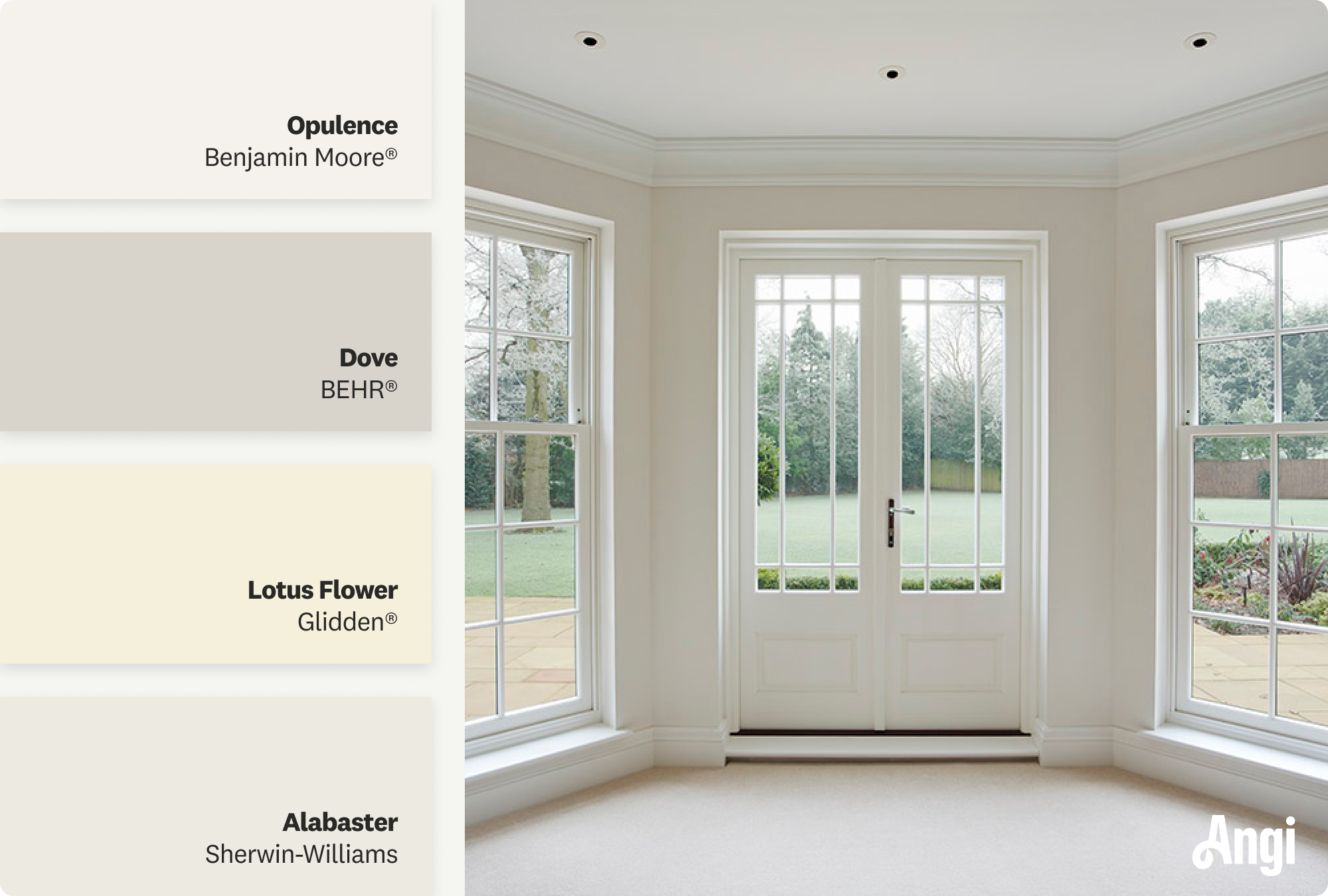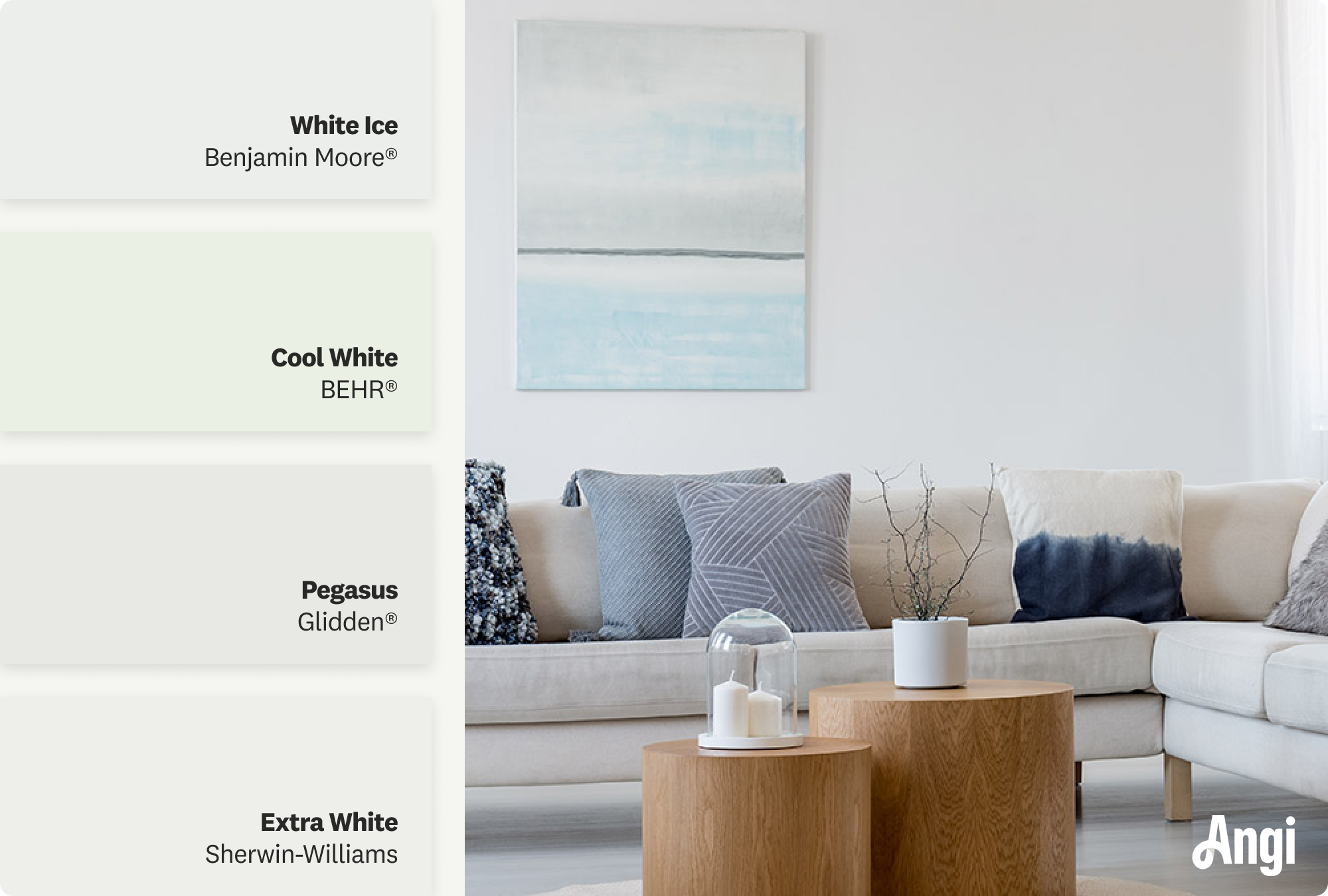
How much is a gallon of paint? Whether latex or oil-based, spray paint, primer, shellac, or lacquer, we’ll tell you what price to expect.
White paint just got a whole lot more complex


You head into your local home improvement store ready to grab a few gallons of white paint. How complicated could it be? White is white, right? Wrong. In this guide, we’ll explain the five best white paint colors and what they add to your home’s interior. With this information, you can get the exact white you’re looking for and create either a warm and cozy or bright and energetic mood in your living space, whether you hire a painter for guidance or make the selection yourself.

Warm white paint typically has undertones of yellow, red, or orange in it, creating more of a beige white. The result is a calm and relaxing feeling in your home, making it the best white color for bedrooms and low-key entertainment areas.
Warm white complements wood accents and other natural materials well and helps guests feel welcome and grounded. Consider pairing warm whites with rustic wooden furniture, blankets made from natural materials, and houseplants. Warmer whites are some of the best paint colors for farmhouse decor.
For inspiration:
Benjamin Moore® Opulence
BEHR® Dove
Glidden® Lotus Flower
Sherwin Williams® Alabaster

Cool white paint provides the opposite feeling you’d get from a warmer white, introducing some energy to your space. Cool white paint colors often have blue, green, or purple undertones, so they feel less relaxing but still keep your living space comfortable and clean. Cool whites are a better fit for more modern decor.
Consider coupling cool white paint with metal or concrete accents or with stone with a blueish hue for an energizing yet natural appearance.
For inspiration:
Benjamin Moore® White Ice
BEHR® Cool White
Glidden® Pegasus
Sherwin Williams® Extra White

Soft white paints have a low light reflectance value (LRV), which is a measurement of how much light the paint reflects. Soft whites have LRVs in the low- to mid-80s. They reflect less light than bright whites, providing a softer appearance and a more calming effect in your room. Soft whites can be warm or cool. Choose a soft and warm white for the most relaxing mood.
Like warmer white paint, soft whites pair well with more rustic decor, so consider coupling them with blankets and cloth made from natural material, as well as raw wood and houseplants. They create a dimmer glow that can beautifully complement sun-soaked rooms without feeling overwhelming.
For inspiration:
Benjamin Moore® Soft White
BEHR® Silky White
Glidden® Commercial White
Sherwin Williams® Oyster White

Bright white paint colors have higher LRVs that reflect more light, making your space look and feel brighter and cleaner. High LRVs are more common with cool white colors to create a more energizing feeling in your home.
Since bright whites reflect more light, they’re great for areas that don’t get a lot of natural sunlight. They also complement modern decor best, so couple them with stone, concrete, and metal decor for the most cohesive look.
For inspiration:
Benjamin Moore® Distant Gray
BEHR® Ultra Pure White
Sherwin Williams® High Reflective White
Sherwin Williams® White Snow

Pure whites or true whites don’t have undertones, so they’re neither warm nor cool. They’re more neutral, so you’ll want to rely on accent or complementary colors elsewhere in your room to create some visual intrigue and depth.
Pure white paints are most popular in kitchens and bathrooms, but you can use them in bedrooms for a super clean appearance. Due to their lack of undertones, you can use any kind of decor you like. Keep things rustic and clean by introducing wood elements, houseplants, and natural materials, or modernize the look by adding cool stone colors, light-colored tiles, and metal accents.
Pure whites also typically have LRVs in the mid- to high 90s, so they reflect more light than bright whites. They’re great for brightening up a room that doesn’t see a lot of natural sunlight or creating a light, airy feeling in a sun-soaked room.
For inspiration:
Benjamin Moore® Chantilly Lace
BEHR® Ultra Pure White
Sherwin Williams® Snowbound
Sherwin Williams® High Reflective White
Going with white paint may seem like a simple option, but there are hundreds of options out there, and they can quickly get just as overwhelming as if you went with another color. There are a few things you can do to make sure you get the best white paint color for your space.
White might seem like a simple color to go with for your space, but the paint you choose will still affect how your home feels. Choose a cooler white if you prefer a more modern and energetic space, and stick with a warmer white with red, yellow, or orange tones to create a more relaxing and natural atmosphere. If you’re painting a bedroom, warmer whites are more popular options, while cooler whites can liven up entertaining spaces, like kitchens or living rooms.
Test a color before you commit by painting large swatches on your walls and seeing how they look during different times of day.
If you already have decor in your space and are just looking to change up the base color, think about what would complement your style best. If you’re someone who has a lot of wood accents and natural materials, like linen curtains and merino wool blankets, a warmer white will probably create a more cohesive look. If your decor preferences lean toward stone, metal, and industrial, a cooler white with blue undertones is likely going to look best.
The LRV of your white paint will affect how your room handles light. A softer white paint color for sun-soaked rooms will make that sunlight feel cozy and inviting rather than invigorating. Have an area that doesn’t get much natural light, like a basement? Consider a brighter white with a higher LRV, as it will reflect more light and brighten up the space.
Try to match your white to hard finishes, like countertops, cabinet colors, and the material and color of your flooring. Painting your walls to match and complement these finishes will make for a more cohesive look without having to replace them. You can even match your trim color to your wall color if you don’t want to repaint trim, too, or paint your cabinets white and go with a different color on your walls.
Finally, you can always contact an interior painting company near you for help. Professionals can offer expert advice on creating a whole-house color palette and a more cohesive appearance that takes things like sunlight, decor, and energy into account.
I got interior painting done and I couldnâ t be happier!! The team did a professional job and their quality of work is outstanding. I did not have any issues and highly recommend.
Always on time, very knowledgeable about his craft,cleans up after themselves, reasonable pricing. Would highly recommend them to paint my house again.
Amazing customer service. They were patient and helpful and really got the job done right. Interior painting job came out beautifully. Work quality is exemplary and I would recommend them if you are looking for great quality and great prices.
Gustavo and First Call Contractors are outstanding! Over the past year, my family has worked with First Call Contractors on a variety of projects - bedroom renovations, interior painting, bathroom repair, carpentry, and more. We appreciate the team's high quality of work, transparency, and...
A very good company to work with: professional, reasonably priced, and willing to go above and beyond to satisfy the customer. We had rotted wood and new aluminum roof trim installed, and the result is perfect and done on time. I definitely recommend them and will certainly use them for...
The service was excellent! Norwin's trap caught the dangerous bob cat in short order. I am very thankful!
Brandon Burnette did such a great job. I'm so happy I had him as my worker today. Very nice and friendly young man. 10 star in my book.
We had Brandon from DeMarks come out and power wash our siding. The house is 26 years old and had never been washed before. I can not say enough about how hard he worked to get every inch of the house sparkling clean. Not only did he wash the siding, but the soffit, fascia, and gutters as...
We had LHR install a new roof and gutter system. While they were not the cheapest, they were considered the most reliable and fetish for using only high-value products that would last for many years. Additionally, they were highly professional and never tried to push their services or any...
Encore Painting did a fantastic interior paint job for two of our offices. Very professional, clean and efficient paint crew. Communication was great and I would highly recommend.
From average costs to expert advice, get all the answers you need to get your job done.

How much is a gallon of paint? Whether latex or oil-based, spray paint, primer, shellac, or lacquer, we’ll tell you what price to expect.

The cost to paint the interior of a house in Portland, OR depends on size, layout, type of surface, and more. Learn what factors can influence your total in this guide.

The cost to paint the interior of a house in Los Angeles, CA depends on size, layout, type of surface, and more. Learn what factors can influence your total in this guide.
.jpg?impolicy=leadImage)
Painting your kitchen cabinets may take some elbow grease, but you’ll get a kitchen makeover without a lot of money. Here’s how to paint cabinets for a new look.

The cost to paint trim on a house depends on several factors. This informative cost guide will help you budget for your upcoming paint project.

Paint on metal doesn’t have to be permanent. Learn how to remove paint from metal yourself with various household methods.